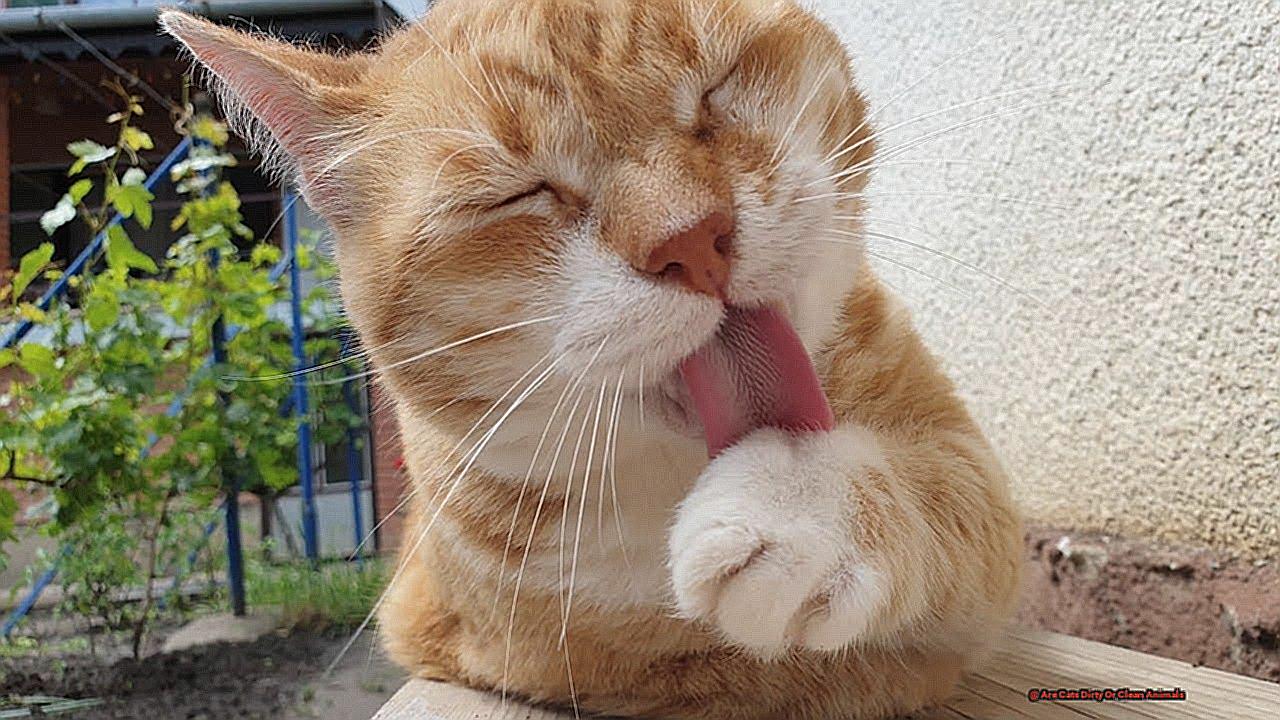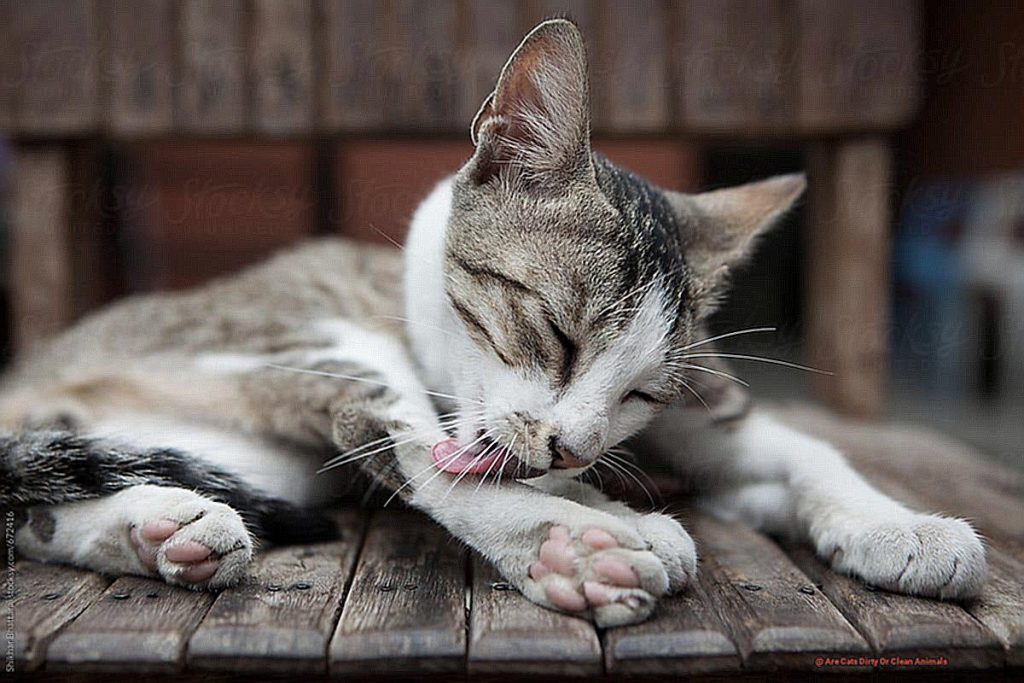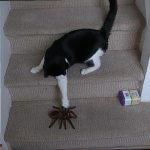When we think of cats, we picture them as graceful, playful creatures with an insatiable love for cuddles. But there’s one trait that often gets overlooked – their impeccable cleanliness.
That’s right; these adorable furballs don’t just win us over with their charm; they also reign supreme in the hygiene department. As a devoted cat parent myself, I’ve always been fascinated by my feline friend’s effortless ability to stay clean and tidy. And trust me; it goes beyond just grooming her fur. Cats take cleanliness to a whole new level.
So let’s take a closer look at these four-legged perfectionists and uncover the secrets behind their flawless hygiene habits.
Are Cats Dirty Or Clean Animals?
Contents
Are cats dirty or clean animals? This is a question that has sparked many debates and discussions among cat owners. Some people believe that cats are naturally dirty creatures, while others swear by their cleanliness. It’s important for cat owners to understand the truth about cats’ hygiene habits, as it can affect how we care for our feline friends.
The Myth of Cats Being Dirty:
One common misconception about cats is that they are dirty animals. This belief stems from their reputation for being independent and not grooming themselves as much as dogs do. However, this couldn’t be further from the truth. Cats are actually very clean animals and spend a large portion of their day grooming themselves.
Cats Are Self-Groomers:
Cats have a rough tongue that acts like a brush, removing dirt and loose fur from their coat. They also use their paws to clean hard-to-reach areas, such as behind their ears and under their chin. In fact, cats spend up to 50% of their waking hours grooming themselves. This is not only to keep their coat clean but also to regulate their body temperature and relax them.
Litter Box Habits:
Another reason why cats are perceived as dirty is because of their litter box habits. However, it’s important to understand that this behavior is natural for cats. They instinctively bury their waste to avoid attracting predators in the wild. As long as the litter box is kept clean and maintained regularly, there should be no issues with odor or hygiene.
The Importance of Regular Grooming:
While cats may groom themselves, they still need regular grooming from their owners. This includes brushing their fur to prevent matting and hairballs, trimming their nails, and cleaning their ears and teeth. Regular grooming not only keeps your cat clean but also helps maintain their overall health.
Factors That Can Make a Cat Appear Dirty:
There are certain factors that can make a cat appear dirty, such as living in a multi-cat household with poor hygiene practices or having underlying health conditions that affect their grooming habits. In these cases, it’s important to address the root cause rather than labeling the cat as inherently dirty.
The Truth About Cat Grooming Habits
You may have noticed that your feline friend spends a significant amount of time grooming themselves. This behavior is rooted in their natural instincts as hunters and predators, where staying clean and scent-free is crucial for survival in the wild. However, this does not mean that cats are inherently clean animals. In fact, there are various factors that contribute to a cat’s cleanliness, including their breed, living environment, and personal habits.
Breed Matters: Understanding Your Cat’s Grooming Needs
Just like humans, cats come in all shapes and sizes, with different coat lengths and textures. This can greatly impact their grooming needs. Breeds such as the Sphynx, with little to no fur, may require more frequent baths to remove excess oils from their skin. On the other hand, long-haired breeds like the Persian may need daily brushing to prevent matting and skin issues.
Living Environment: Indoor vs. Outdoor Cats
The living environment of a cat also plays a significant role in their cleanliness. Indoor cats tend to be cleaner than outdoor cats due to limited exposure to dirt and parasites. However, indoor cats still require regular cleaning of their litter boxes to maintain good hygiene. On the other hand, outdoor cats may bring in dirt and debris from outside and have a higher risk of picking up parasites that can affect their cleanliness.
Personal Habits: From Stress Grooming to Messy Mishaps
Each cat has its own unique personality and habits that can impact their grooming routine. Some cats may be prone to stress grooming, where they excessively groom themselves when anxious or stressed. This can result in hairballs and skin irritations. Other cats may simply not be as diligent when it comes to grooming certain areas of their body, such as the back of their neck or base of their tail. As owners, it is important to monitor our cats’ grooming habits and address any underlying health or behavioral issues that may be affecting their cleanliness.
The Importance of Litter Box Maintenance for Cleanliness
If you’re a cat owner, you know that these furry creatures are known for their cleanliness and grooming habits. But let’s face it, their litter box is not always the most pleasant place in the house. However, regular maintenance of the litter box is crucial for both your cat’s health and your own sanity. Let’s dive into why litter box maintenance is so important.
Why is litter box maintenance necessary?
The litter box is where cats eliminate waste, and if not maintained properly, it can lead to health issues for both cats and their owners. Cats are instinctively clean animals and prefer a clean litter box, so neglecting its maintenance can lead to them avoiding it altogether and creating a mess elsewhere. Additionally, bacteria can grow in a dirty litter box, causing infections for both cats and humans.
How often should you clean the litter box?

To keep your cat happy and healthy, it is recommended to scoop the litter box at least once a day. This not only keeps it clean for your cat but also prevents the buildup of bacteria. It is also important to completely replace the litter and clean the box every 1-2 weeks.

Choosing the right type of litter
The type of litter you choose can also play a significant role in maintaining cleanliness in the litter box. Clumping litters are easier to scoop and keep the box cleaner. However, some cats may have preferences for certain types of litter, so it’s essential to experiment and find what works best for your cat.
Proper disposal of used litter
Proper disposal of used litter is crucial for maintaining cleanliness. It is recommended to use biodegradable bags or flushable litter to avoid adding to landfills.
Multi-cat households
In households with more than one cat, it is essential to have one litter box per cat plus an extra one. This not only ensures cleanliness but also prevents conflicts between cats over sharing a litter box.
Keeping the litter box clean
Regularly washing the litter box with hot water and mild soap will help keep it sanitary and odor-free. Avoid using harsh chemicals as they can be harmful to cats.
Regular Grooming Practices for Cats
One of the most important responsibilities is to keep your furry friend clean and well-groomed. Regular grooming not only keeps your cat looking their best, but it also plays a crucial role in maintaining their overall health and well-being. In this section, we will discuss the importance of regular grooming for cats and its benefits, as well as provide tips and tools for effective grooming.
Why is grooming important for cats?
Just like how we humans need regular showers and haircuts, cats need grooming too. Here are some reasons why grooming is essential for your feline friend:
- Removes dead hair, dirt, and parasites: Regular grooming helps remove dead hair, dirt, and parasites from your cat’s coat. This not only keeps them clean and smelling fresh but also prevents potential skin irritations caused by these unwanted elements.
- Stimulates blood flow and distributes natural oils: Grooming also stimulates blood flow in your cat’s skin, promoting a healthy coat. It also helps distribute natural oils throughout their fur, keeping it shiny and moisturized.
- Regulates body temperature: Cats groom themselves not only to maintain a clean appearance but also to regulate their body temperature. By removing excess fur during grooming, they can stay cool in warmer weather and keep warm during colder months.
- Prevents matting: Regular grooming helps prevent mats from forming in your cat’s coat. Mats can be painful and difficult to remove, so it’s important to stay on top of grooming to avoid this issue.
How often should you groom your cat?
The frequency of grooming depends on your cat’s breed and coat type. Short-haired cats may only require grooming once or twice a week, while long-haired cats may need daily grooming sessions. Cats that spend a lot of time outdoors may need more frequent grooming to remove debris and prevent matting. Older cats or those with health conditions may also need extra grooming as they may have difficulty grooming themselves.
Tools for grooming your cat
To effectively groom your cat, you will need the right tools. Here are some essential items for grooming your feline friend:
- Wire slicker brush: This is a brush with fine wire bristles that can remove loose hair, debris, and knots from your cat’s fur. It is especially good for long-haired cats or cats with thick or curly coats. You should use gentle strokes and avoid brushing too hard or too often, as this can irritate your cat’s skin.
- Soft bristle brush: This is a brush with soft nylon or natural bristles that can smooth and shine your cat’s coat. It is suitable for short-haired cats or cats with sensitive skin. You can use this brush daily or weekly to massage your cat and distribute their natural oils.
- Flea comb: This is a comb with very fine teeth that can catch and remove fleas, ticks, and their eggs from your cat’s fur. It is a good idea to use this comb regularly, especially during flea season, to prevent infestations and infections. You should dip the comb in a bowl of soapy water after each stroke to kill the fleas.
- Nail trimmer: This is a tool that can cut your cat’s claws to prevent them from growing too long and causing problems. You should trim your cat’s nails every few weeks, depending on how fast they grow. You should only cut the tip of the nail, avoiding the pink part called the quick, which contains blood vessels and nerves. You can use a special cat nail trimmer or a human nail clipper.
- Toothbrush: This is a tool that can clean your cat’s teeth and gums to prevent dental diseases and bad breath. You should brush your cat’s teeth at least once a week, using a soft-bristled toothbrush and a cat-friendly toothpaste. You should gently massage your cat’s teeth and gums, focusing on the back teeth and the gum line. You can also use a finger brush or a piece of gauze wrapped around your finger.
- Ear wipes: These are moistened pads that can clean your cat’s ears and remove any wax, dirt, or debris. You should use ear wipes once or twice a month, or whenever you notice your cat scratching their ears or shaking their head. You should gently wipe the inside of your cat’s ears, avoiding the ear canal and the eardrum. You can also use a cotton ball or a soft cloth dampened with water or a cat ear cleaner.
- Deshedding tool: This is a tool that can reduce the amount of shedding hair from your cat’s coat. It has a metal blade with fine teeth that can reach the undercoat and remove loose hair. It is ideal for cats that shed a lot or have a double coat. You should use this tool once or twice a week, or more often during shedding season. You should follow the direction of your cat’s hair growth and avoid pressing too hard or pulling the hair.
Factors That Can Affect a Cat’s Cleanliness
They spend hours grooming themselves, meticulously cleaning every inch of their body. But have you ever wondered what factors can affect a cat’s cleanliness? As an expert on the topic, I’m here to share my knowledge and research with you.
Breed plays a significant role in a cat’s cleanliness. Some breeds, like the Persian and Maine Coon, have long and dense fur that requires more maintenance and grooming to keep it clean and tangle-free. On the other hand, short-haired breeds like the Siamese or American Shorthair may require less grooming to maintain their cleanliness.
Age is another factor to consider. Kittens are not as skilled at grooming themselves compared to adult cats. So if you have a little ball of fluff running around, don’t be surprised if they appear a bit dirtier or disheveled. As they grow older and develop their grooming skills, they will become cleaner animals.
A cat’s health can also affect its cleanliness. Cats with underlying health issues may have a hard time grooming themselves properly due to lack of energy or mobility. This can result in a dirty appearance or even an unpleasant odor. If you notice changes in your cat’s grooming habits, it’s essential to take them to the vet for a check-up.
Living conditions also play a role in a cat’s cleanliness. Indoor cats tend to be cleaner than outdoor cats because they are not exposed to dirt, debris, and other environmental factors that can make them appear dirty. However, even indoor cats can get into messy situations, such as spilling food or litter around their living area.
The number of cats in a household can also impact their cleanliness. Having multiple cats can lead to unsanitary living conditions if proper care and cleaning are not maintained. On the other hand, some cats may groom each other and help keep each other clean. It’s essential to find a balance and monitor your cats’ grooming habits.
Lastly, a cat’s individual personality and habits can also affect their cleanliness. Some cats are naturally more fastidious and will spend hours grooming themselves, while others may not be as concerned with their appearance. It’s crucial to observe your cat’s habits and behavior to determine their overall cleanliness.
Maintaining a Clean Environment for Your Feline Friend
As a cat owner, you may have noticed that your furry companion spends a significant amount of time grooming themselves. From meticulously licking their paws to carefully cleaning their fur, cats are known for their impeccable cleanliness. But as an expert on cat care, I’m here to tell you that maintaining a clean environment for your feline friend goes beyond their natural grooming habits. It’s crucial for their health and well-being, as well as for the cleanliness and hygiene of your home.
Designated Toileting Space
First and foremost, providing your cat with a designated space for their toileting needs is essential. Cats are instinctually inclined to bury their waste, so having a litter box in a quiet and accessible area is crucial. Make sure to clean the litter box daily and completely change the litter at least once a week. Not only does this prevent unpleasant odors, but it also ensures that your cat has a clean and comfortable place to do their business.
Clean Food and Water Bowls
Next up, let’s talk about your cat’s food and water bowls. These can easily become breeding grounds for bacteria if not cleaned regularly. Make sure to wash them with hot water or use pet-safe disinfectants to keep them clean and safe for your cat to use.
Regularly Clean Toys and Bedding
Your cat’s toys and bedding should also be regularly cleaned. These items can harbor bacteria and parasites that can affect your cat’s health. Wash them with hot water or use pet-safe disinfectants to keep them clean and safe for your cat to use.
Grooming Is Key
Regularly grooming your cat not only removes loose hair but also distributes natural oils throughout their coat, keeping it healthy and shiny. Brushing their fur is essential, especially for long-haired breeds. Plus, it’s a great bonding activity between you and your furry friend.
Bathing Is Necessary
While cats are known for their self-grooming abilities, some may require a little extra help in keeping their coats clean. It’s recommended to bathe your cat occasionally using a gentle shampoo specifically made for cats. Always make sure to dry them thoroughly to prevent any skin irritation.
Common Misconceptions About Cat Hygiene
You may have heard or even believed some common misconceptions about your feline friend’s hygiene. These misconceptions often arise from a lack of understanding of cats’ natural behaviors and habits. As an expert on cat hygiene, I am here to debunk these myths and give you a better understanding of how clean and hygienic cats actually are.
Myth #1: Cats are inherently dirty animals.
Many people believe that cats are dirty because they spend most of their time grooming themselves. However, this is far from the truth. Cats are actually very clean animals and spend a significant amount of time grooming to remove dirt, debris, and loose fur from their coat. In fact, they spend about 30% of their waking hours grooming themselves.
Myth #2: Cats carry more bacteria than other pets.
Cats are often portrayed as carriers of harmful bacteria, but this is not entirely accurate. While it is true that cats can carry certain bacteria, this is not exclusive to them. Dogs, for example, also carry bacteria that can be harmful to humans. The key difference is that cats have a higher level of self-grooming, which helps keep their bacteria levels in check. Additionally, most bacteria carried by cats are not harmful to humans.
Myth #3: Cats shed excessively and contribute to a dirty environment.
Shedding is a natural process for all animals and cannot be avoided. However, with regular brushing and grooming, shedding can be managed effectively. It is also essential to note that cats are naturally attracted to cleanliness and will often choose a clean spot over a dirty one for their bathroom needs.
Myth #4: Cats are not picky about their litter box.
Contrary to popular belief, cats are fastidious about keeping their litter box clean. They will avoid using a dirty litter box and may even develop health issues if they are unable to maintain proper hygiene in their bathroom area. This is why it is essential to clean their litter box regularly and provide them with a clean and comfortable space for their toileting needs.
Conclusion
As we near the end of this discussion, it is clear that cats are without a doubt one of the most pristine animals in existence. Not only do they prioritize their own cleanliness, but they also have an inherent distaste for unclean surroundings. So when someone poses the question, “Are cats dirty or clean animals?”, you can confidently reply that they are undoubtedly one of the most immaculate creatures on earth.
With their meticulous self-grooming habits and fastidious nature towards their litter box, cats go above and beyond to maintain their hygiene. And let’s not forget about their innate ability to regulate body temperature through grooming. These furry perfectionists truly deserve all the admiration and affection they receive.
So as devoted cat owners, let’s continue to provide our feline companions with a spotless living environment, regular grooming sessions, and plenty of love and care.






